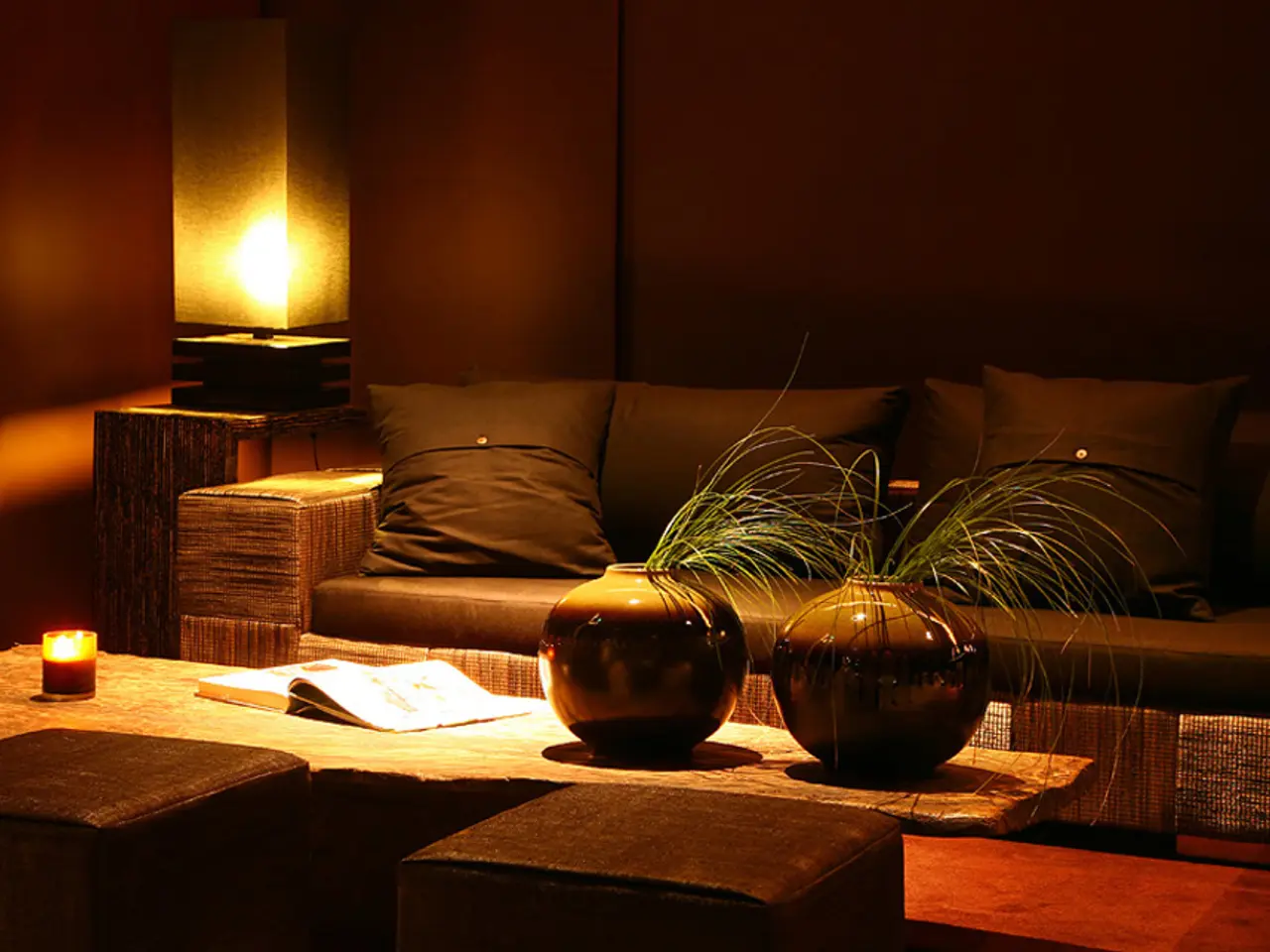Designing Scandinavian Interiors: Achieving a Minimalist, Comfortable, and Practical Ambiance
A focus on simplicity, functionality, and beauty has made Scandinavian interior design a global favorite. Originating from the Nordic countries, the design philosophy emphasizes creating cozy, welcoming spaces using minimalist approach, clean lines, neutral colors, and an abundance of natural light.
This guide aims to provide ideas and tips on how to transform your living space into a stylish, cozy, and functional home. Let's delve deeper into the core principles of Scandinavian interior design.
Neutral Color Palettes for a Light and Airy Space
A neutral color palette serves as the foundation of Scandinavian interior design. Soft, muted tones create an open, airy atmosphere, making the room seem larger and brighter. The emphasis is on creating a serene environment where design elements work in harmony.
Whites and Light Grays for a Clean Look
White is widely used for its ability to reflect light and promote a sense of cleanliness and openness. Light grays provide depth without overwhelming the space.
How to Apply It:
- Paint walls, ceilings, and furniture in whites or light grays, creating a simple, uncluttered space.
- Use gray tones for rugs, cushions, or accent furniture to add texture without disrupting the clean, minimal aesthetic.
Warm Neutrals for Softness
Warm neutrals like beige, taupe, and soft browns increase warmth and coziness in a Scandinavian space, countering the sometimes cold feel of the neutral tones.
How to Apply It:
- Add beige-colored cushions, warm-toned wooden furniture, and taupe rugs to create a more inviting atmosphere while still adhering to the Scandinavian focus on simplicity.
Pops of Color for Contrast
Though Scandinavian interiors favor a neutral palette, adding small pops of color can offer vibrancy and personality to a room. These colors are often muted and earthy.
How to Apply It:
- Use accent colors such as mustard yellow, forest green, or navy blue in throw pillows, art pieces, or vases. These pops of color will add energy to the room without detracting from the minimalist aesthetic.
Focus on Functional and Minimalist Furniture
The beauty of Scandinavian furniture lies in its sleek design, functionality, and simplicity. Furniture should be both practical and aesthetic,, making the most of the available space.
Simple, Sleek Furniture with Clean Lines
Scandinavian furniture is characterized by low-profile designs and straight lines. The aim is to maintain a clutter-free environment while offering maximum comfort and style.
How to Apply It:
- Opt for a neutral-colored sofa with clean, simple lines and wooden legs. Pair it with minimalist side tables and slim shelving units for a cohesive, modern look.
Multi-Functional Furniture
Scandinavian design values functionality, incorporating multi-functional furniture to make the most of even smaller spaces.
How to Apply It:
- Look for modular sofas that can be rearranged, coffee tables with built-in storage, or fold-out desks that save space. Storage ottomans or benches with hidden compartments can help keep the space organized as well.
Light Wood and Natural Materials
Wood plays a key role in Scandinavian interiors, offering warmth and natural texture. Light wood, such as oak pine, and birch are favored for their organic look.
How to Apply It:
- Choose light wood furniture like coffee tables, bookshelves, and side tables. Incorporate wooden accents in the form of flooring or wall paneling for a cohesive and grounded look.
Maximize Natural Light
Natural light is essential in Scandinavian design, especially in the Nordic countries with their long, dark winters. The objective is to allow as much sunlight as possible to make the room feel lighter and larger.
Large Windows for Brightness
Scandinavian homes often feature large windows, allowing sunlight to flood the room.
How to Apply It:
- Install floor-to-ceiling windows or wide sliding glass doors to let in as much light as possible. Opt for sheer curtains or light blinds, keeping them simple, to allow sunlight to filter through.
Simple Window Treatments
In Scandinavian design, window treatments should be simple and uncluttered.
How to Apply It:
- Use light, airy curtains in linen or cotton, or opt for blinds that can be easily adjusted. Avoid heavy drapes or dark shades that block light and create a feeling of heaviness.
Mirrors to Reflect Light
Mirrors are effective in enhancing natural light in a room.
How to Apply It:
- Hang a large mirror across from a window to reflect natural light throughout the room. For a smaller impact, place decorative mirrors on shelves or walls, adding interest without overwhelming the space.
By incorporating these elements, you can create a Scandinavian interior that represents simplicity, functionality, and a beautiful connection to nature. The key is to keep it minimal and make each element count in your cozy, inviting space.
Incorporate floor-to-ceiling windows for an abundance of natural light, emulating the Scandinavian design philosophy that emphasizes creating welcoming spaces using a minimalist approach, clean lines, and an abundance of natural light.
In the pursuit of a serene environment, marry marble countertops with neutral color palettes to create a light and airy space, in line with the core principles of Scandinavian interior design.
To maximize the impact of multi-functional furniture, opt for pieces that serve dual purposes, following the Scandinavian design philosophy that values functionality and simplicity.








